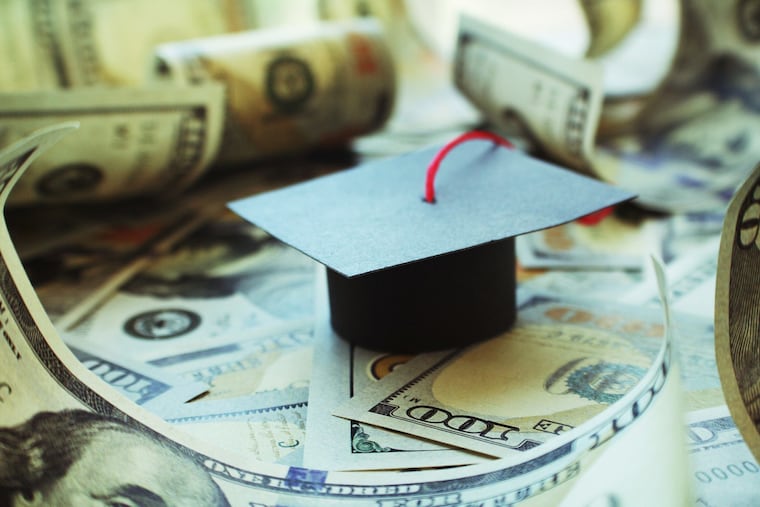Philly-area residents pay off more student debt — nearly $40,000, on average — than graduates in San Francisco and New York
Philly student loan borrowers carry more debt than those in New York and San Francisco. And delinquent payers aren't who you think.

Do you live in Philadelphia and pay off wickedly high student loans every month? You’ve got a lot of company.
About 25.3%, or more than 310,000 Philadelphia adults, had an active student loan they’re still paying, according to a new report from the Philadelphia Federal Reserve.
Philly residents in the metro area are paying off more debt — an average of $37,468 — than graduates in other major American cities.
No matter where you live in Philadelphia, your student loan debt is likely higher in almost all zip codes compared with the rest of the nation, the Philly Fed study disclosed.
Even Philly zip codes with smaller average loan balances have more debt than San Francisco and New York, the study found using data as of Dec. 1, 2018.
Philly Fed researcher Anna Tranfaglia found greater student loan debt in neighborhoods with higher median incomes and higher levels of education, such as Manayunk (19127) and Graduate Hospital (19146). Center City West residents are paying off $47,906 in loans, on average.
That’s no surprise, because the University of Pennsylvania and Drexel University campuses are based in University City across the Schuylkill from Center City West.
“It makes sense given how many colleges and universities there are in this area, including medical and dental schools,” she said. Graduate school students tend to carry school loans in the six figures.
She also found high student loan debt in zip codes with low household median income levels, such as Germantown (19144) and Brewerytown and Strawberry Mansion (19121).
And it’s not just young college kids paying off loans.
Philly residents between ages 36 to 45 and 46 to 56 are also carrying significant debt.
“More and more parents may be co-signing and taking out debt for their children,” the analyst said.
Philly’s 36-to-45-year-olds are carrying an average of $44,241, while the 46-to-56-year-olds have an average of $42,654.
Wealthier neighborhoods by income may indicate more doctors, nurses, dentists, and MBAs, the report postulated.
Loan balances “are massive in Center City, Bella Vista, Graduate Hospital. But as a share of median household income, then those debt-to-income ratios are smaller than expected,” meaning those grads make more annually to cover their loans, the report said.
Delinquency trends
About one-fifth of all student loan borrowers in Philly are delinquent, the Fed found, meaning 90 days or more past due.
A total of 21.5% of student loan borrowers — or 66,650 adults — were delinquent in the fourth quarter of 2018, the latest period for which data are available.
“Students are carrying far too heavy of a burden in tuition and fees. They’re ending up with far too heavy of a burden in student loan debt,” said Pennsylvania Treasurer Joe Torsella. “Even before the crushing economic effects of the coronavirus hit our state, at least one out of five Philadelphia student loan borrowers were in financial distress. This is unacceptable, and it demands our attention to craft new policies to reverse this course.”
One trend that surprised the Fed: Philadelphians with smaller loan balances are actually more likely to be delinquent.
Why? Those with less than $10,000 in student loans generally “left school before finishing or didn’t graduate,” Tranfaglia said, and may not have gotten the jobs they expected.
There’s also a large cluster of zip codes with small student loan balances in North, West, and Northeast Philadelphia.
“We see very different delinquency by zip codes and shares of black and Hispanic residents. This is an area that requires more attention and focus to find solutions” such as targeted credit counseling, Tranfaglia said.
The conclusion? Delinquent borrowers owe rather modest sums in Philadelphia. But even relatively small amounts of debt can damage borrowers’ credit for long periods of time.